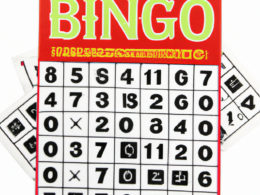Bingo pattern is a statistical term that describes the occurrence of certain patterns in data. The patterns can be observed when looking at the data as a whole, or when looking at specific parts of the data.
Bingo patterns can be useful for identifying trends, determining how certain variables are related to each other, and finding correlations between different variables.
There are many types of bingo patterns, but the most common are clustering and trending. Clustering is when groUPS of similar data points are found together. For example, if we look at the data set of monthly sales figures for a company, we might find that the sales numbers for each month tend to cluster together. This means that there is a tendency for the numbers to rise and fall in roughly similar amounts throughout the year.
Trending is when certain variables seem to be moving in a certain direction over time. For example, if we look at monthly sales figures for a company, we might find that the sales numbers are trending up over time. This means that there is a trend towards higher sales figures over time, even though individual months may vary in terms of how high they rank overall.
Bingo patterns can provide valuable information about how different variables are related to each other, and how they might change over time. They can also help us identify potential trends and take appropriate action based on what we know.
By understanding how bingo patterns work and how they can be used to our advantage, we can better make sense of the data that surrounds us and take effective actions based on what we know.







